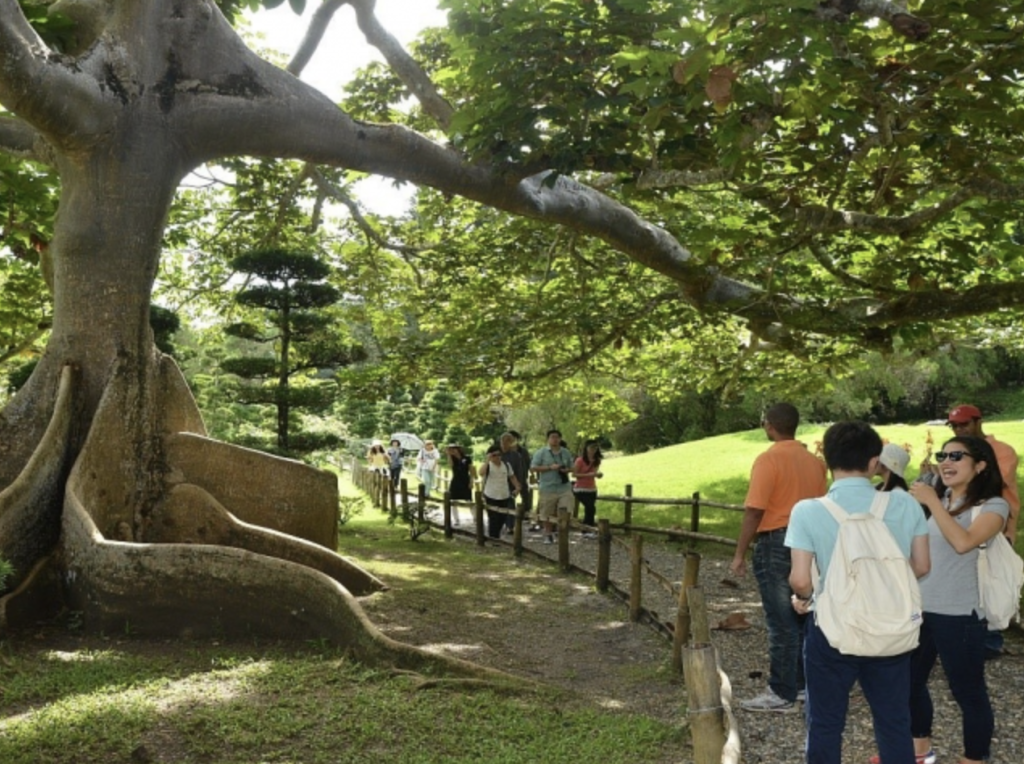
There is much expectation for the announced presentation on the morning of Wednesday, 23 July 2025 at the Botanical Gardens by the Ministry of Public Works of the roadworks modernization plan addressing concerns the roadworks would impact the National Botanical Gardens of Santo Domingo.
Minister of Public Works Eduardo Estrella is scheduled to announce the project for the roadworks modernization. In response to generalized concern, President Luis Abinader said in his weekly press conference on Monday, 21 July 2025, that the roadworks “will not touch the Botanical Gardens.” Instead, he said a tunnel would be built.
The Minister of Environment had said earlier in the week that 0.01% of the Botanical Gardens would be impacted. The Botanical Gardens has around two million square meters.
A generalized uproar had demanded more information from the government. Most statements in the media were against even a small mutilation of the popular city park on grounds that Santo Domingo needs more green areas not less.
In a CDN Channel 37 interview, the director of the Law School at the PUCMM, Hector Alies gave details on the legal status of the Botanical Gardens, and the loophole that could be found to mutilate the park. Alies explained that the Botanical Gardens is a public property, under the Ministry of Environment (Law 64-00). But it is in the public domain, yet not a protected area and not under the System of Protected Areas (Sinap).
Art. 16 of the Constitution establishes that areas under the SINAP are awarded a special protection regime that can only be modified with the passing of a new law with two thirds of the vote of each chamber of the National Congress. The ruling PRM is majority in both chambers.
Yet, Alies says that the park does not need to have Sinap protected area status for the government to protect it. “The few trees that are left, we have to protect them,” he remarked.
Meanwhile, Alies said that the proponents of the mutilation of the Botanical Gardens may use a loophole in the legislation and allege what will happen is going from one public use to another – from that of Botanical Gardens to a public road. Both are of public use.
Yet, during the interview he continued to highlight that the Botanical Garden is a key green area that belongs to the city government’s public areas. He said it is prominently featured in the 2030 Plan for Territorial Organization (Pot 2030) that has already been approved for Environmental Zone 7 of the capital city.
He said the government is responsible for carrying out public policies that strike a balance between social and economic benefits and the protection to the environment.
Meanwhile, the population waits for what will be announced on Wednesday, 23 July 2025, holding on to the words of President Abinader who stated in his press conference that “the Botanical Gardens would not be touched.” Abinader said that on the contrary, 20,000 square meters would be added.
The Botanical Gardens was inaugurated in 1976 as part of a series of city parks left by the Balaguer administrations that include the Mirador del Sur, Mirador del Norte, Parque Las Praderas, Parque Iberoamericano and the Centro Olimpico Juan Pablo Duarte.
In recent years, the Centro Olimpico Juan Pablo Duarte has lost hundreds of trees, as new concrete venues have been built for sports venues, reducing the impact of that city park as a green area for Santo Domingo.
Likewise, as the National District government has been generous in authorizing high rises, especially the Carolina Mejia administrations, the city has become less friendly for those who walk. The high rises have resulted in the elimination of thousands of trees.
Alies spoke of the dilemma for the authorities of Santo Domingo. He also mentioned that the country is signatory of declaration of principles and the no environmental regression. He spoke of collective rights. He says proportionality, reasonableness and ponderation, fundamental rights and international commitments need to be considered before taking the cut.
In the Dominican Republic, governments have regularly violated the laws. On occasions, public pressure and citizen empowerment have been effective in getting the government to think twice about its projects.
Follow the story:
CDN
El Nacional
Listin Diario
Hoy
Hoy
DR1 News
23 July 2025

